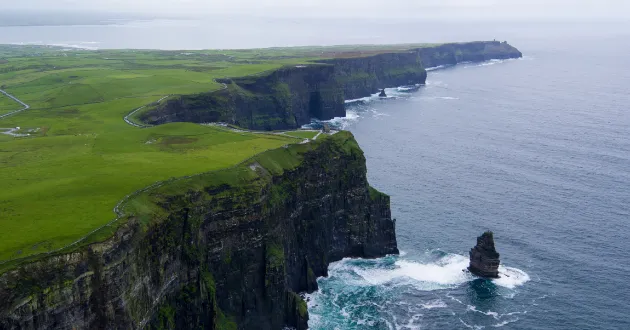Are you tired of the hustle and bustle of modern life and looking to escape into the great outdoors? If so, wild camping in Ireland might be just what you need. Wild camping is the practice of camping in remote locations, away from designated campsites, without amenities or facilities. It’s a way to truly connect with nature and experience the beauty of the natural environment.
However, it’s important to note that wild camping in Ireland is technically illegal, except in certain designated areas. This means that camping outside of designated campsites is not allowed, and doing so could result in fines or other penalties. Researching and obtaining any necessary permits or permissions before camping is essential, and following responsible and respectful camping guidelines to minimize any negative environmental impact is essential.
Despite its illegality, wild camping is still a popular activity in Ireland, and for a good reason. The benefits of wild camping in Ireland are numerous. For one, it allows you to explore some of the country’s most remote and stunning landscapes and connect with nature in an impossible way in more developed areas.
Wild camping also allows you to escape the hustle and bustle of daily life, relax in a tranquil environment, and enjoy a more authentic and immersive outdoor experience.
Several stunning locations exist if you’re interested in wild camping in Ireland. Some of the best wild camping locations in Ireland include:
- The Wicklow Mountains National Park
- The Beara Peninsula
- Inishbofin Island
- Nephin Begand
- Donegal Wild Atlantic Way.
Each of these locations offers breathtaking scenery, opportunities for outdoor adventure, and the chance to truly immerse yourself in the beauty of the natural environment.
So why not take a break from the stresses of modern life and experience the magic of wild camping in Ireland? Remember to be responsible and respectful, and follow Leave No Trace camping guidelines to minimize negative environmental impact.
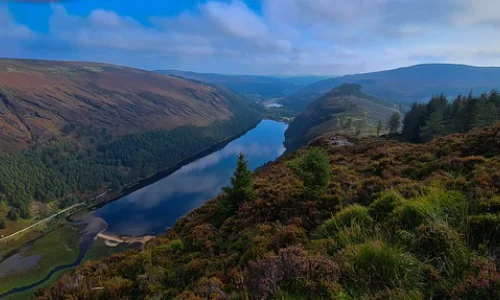
Wild Camping Wicklow Mountains
One of Ireland’s best wild camping locations is the Wicklow Mountains National Park. With its stunning mountain scenery and extensive network of hiking trails, it’s no wonder the park is a popular destination for outdoor enthusiasts.
One particularly beautiful park area is the Glenmalure Valley, which lies at the base of Lugnaquilla Mountain, the highest peak in the range.
The Glenmalure Valley is a remote, rugged landscape offering an actual wilderness experience. Mountains surround the valley and is home to the Avonbeg River, which winds through the valley floor. The valley is accessible by car and is a popular starting point for hikes in the area, including the Wicklow Way hiking trail.
The Wicklow Way is a long-distance hiking trail that runs through the Wicklow Mountains National Park, covering a distance of over 130km. The trail offers stunning views of the surrounding mountains and valleys and is a great way to experience the park’s beauty. Hiking the Wicklow Way is famous for wild campers, as several designated wild camping spots are along the trail.
While enjoying the beauty of the Wicklow Mountains National Park, it’s important to remember to follow Leave No Trace principles and respect the environment.
This means packing out all trash and waste, leaving natural objects and wildlife undisturbed, and camping in designated areas only. By practising responsible and respectful camping, we can help to preserve the natural beauty of this stunning wilderness area for future generations to enjoy.
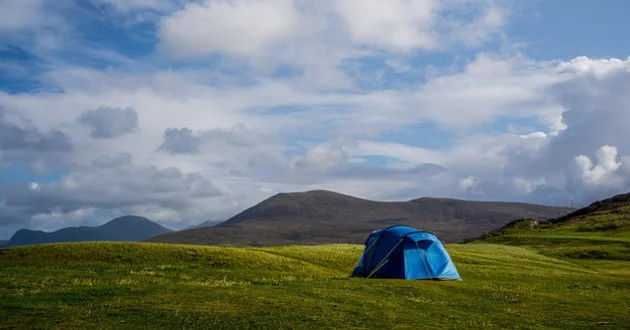
Wild Camping the Beara Peninsula Ireland.
Another stunning wild camping location in Ireland is the Beara Peninsula on the country’s southwestern coast. This remote and rugged landscape is characterized by its dramatic mountains and rugged coastline, offering visitors an actual wilderness experience.
The Beara Peninsula is home to several hiking trails, including the Beara Way, a long-distance trail that winds through the mountains and along the coastline. The Beara Way covers a distance of over 200km and offers stunning views of the surrounding landscape. The trail is a popular destination for wild campers, as several designated campsites are along the route.
The Beara Peninsula also offers opportunities for other outdoor adventures, including fishing, kayaking, and cycling. With its stunning scenery and abundant outdoor activities, the Beara Peninsula is a popular destination for adventure seekers.
However, it’s important to note that the weather on the Beara Peninsula can be unpredictable, with sudden changes in temperature and weather conditions.
It’s essential to be prepared for changing weather conditions and to pack appropriate gear, including warm clothing, rain gear, and sturdy hiking shoes. By being prepared and taking necessary precautions, visitors can fully enjoy the beauty and adventure of this stunning wild camping location.
Wild Camping Inishbofin Island
Inishbofin Island is a remote and stunning wild camping location off the coast of County Galway. This small island is known for its rugged coastline, crystal-clear waters, and diverse wildlife. With limited accommodation options, wild camping is popular for those looking to fully immerse themselves in the island’s natural beauty.
One of Inishbofin Island’s main draws is its outdoor adventure opportunities. The island is surrounded by crystal-clear waters perfect for fishing, kayaking, and swimming. The coastline is also home to various wildlife, including seals, dolphins, and numerous species of seabirds, making it an ideal spot for wildlife spotting.
While enjoying the natural beauty of Inishbofin Island, it’s important to remember to respect the local community and wildlife. The island is home to a small community of residents who rely on tourism for their livelihoods. Visitors should be mindful of their impact on the island’s delicate ecosystem and follow Leave No Trace principles.
It’s also essential to respect the island’s wildlife and avoid disturbing their natural habitats. Inishbofin Island is a stunning wild camping location that offers outdoor adventure and wildlife spotting opportunities. However, visitors should respect the local community and wildlife and follow responsible camping practices to preserve the island’s natural beauty for generations.
Wild Camping Nephin Beg
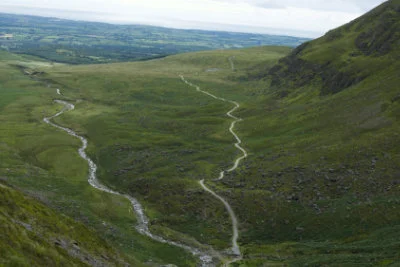
Nephin Beg is a remote, rugged mountain range in County Mayo, west of Ireland. This stunning wild camping location offers visitors a chance to experience the raw and untouched beauty of the Irish wilderness.
The mountain range offers a variety of hiking trails, from challenging hikes to more leisurely walks, making it a popular destination for outdoor enthusiasts. The area is also perfect for wild camping, with several designated campsites for visitors to set up their tents.
In addition to hiking and camping, the remote location of Nephin Beg makes it an ideal spot for stargazing. On a clear night, the skies above the mountain range come alive with a spectacular display of stars.
It’s important to note that Nephin Beg is a remote and challenging location, and visitors should be prepared for the conditions they may encounter. The area is prone to sudden changes in weather, with strong winds and heavy rain common, even in the summer months. Visitors should have the appropriate gear, including sturdy hiking shoes, warm clothing, and waterproof jackets.
It’s also advisable to bring plenty of food and water, as the area has limited facilities.
Nephin Beg is a stunning wild camping location that offers visitors the chance to experience the beauty of Ireland’s rugged mountain landscape. However, visitors should be prepared for the remote and challenging conditions and ensure they have appropriate gear and supplies.
With proper preparation, visitors can fully enjoy the beauty and adventure of this unique wild camping location.
Wild Camping Donegal’s Wild Atlantic Way
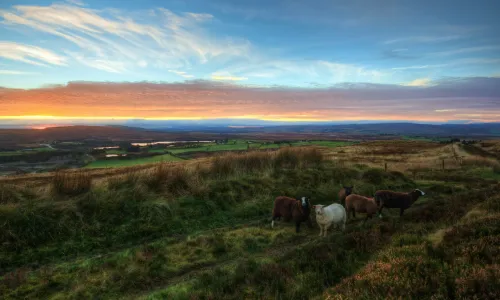
Donegal’s Wild Atlantic Way is a spectacular region of Ireland’s west coast that offers some of the most stunning coastal scenery in the country. With miles of unspoiled coastline, rugged cliffs, and rolling hills, this area is perfect for outdoor adventure and wild camping.
One of the region’s highlights is the Slieve League cliffs, among the highest sea cliffs in Europe. The cliffs offer breathtaking views of the Atlantic Ocean and the surrounding coastline, making it a popular spot for hiking and photography.
Nearby, Glenveagh National Park is another must-see attraction, with miles of hiking trails, stunning waterfalls, and beautiful gardens.
In addition to its natural beauty, the Donegal Wild Atlantic Way also offers a range of outdoor activities for visitors to enjoy. From surfing and kayaking to cycling and horseback riding, there’s something for everyone in this beautiful region.
However, respecting the local culture and environment is essential, as with all wild camping locations. Visitors should be mindful of their impact on the local ecosystem and wildlife and follow Leave No Trace principles to ensure the area remains unspoiled for future generations.
Donegal’s Wild Atlantic Way is a stunning region of Ireland that offers outdoor adventure and wild camping opportunities. Visitors can explore the stunning coastal scenery, hike the Slieve League cliffs, and explore Glenveagh National Park. However, respecting the local culture and environment and following responsible camping practices is essential to ensure the area remains unspoiled for generations.
Leave No Trace Ireland
Ireland’s Leave No Trace policy is a set of guidelines and principles designed to help preserve the natural environment and ensure that wild camping and outdoor recreation are carried out responsibly and sustainably.
These guidelines are based on the principles of respect, responsibility, and stewardship, aimed at minimizing the impact of outdoor activities on the environment.
The policy emphasizes the importance of packing out all trash and litter, leaving the campsite or hiking trail cleaner than you found, and avoiding damage to plants, animals, and the natural landscape.
It also encourages campers and hikers to minimize their environmental impact by using designated campsites, staying on established hiking trails, and avoiding sensitive areas such as wetlands and fragile ecosystems.
By following the Leave No Trace policy, campers and hikers can help protect the natural beauty of Ireland’s wild places and ensure that future generations can enjoy them. In addition, it’s essential to respect local cultures and communities and be mindful of our outdoor activities’ impact on wildlife and the local environment.
The Leave No Trace policy is vital for responsible camping and outdoor recreation in Ireland. By following these guidelines, we can help preserve the natural beauty of Ireland’s wild places and ensure they remain a source of inspiration and enjoyment for generations.
Here are some links to Ireland’s Leave No Trace policy:
- Leave No Trace Ireland: https://www.leavenotraceireland.org/
- National Parks and Wildlife Service (NPWS) Leave No Trace Guidelines: https://www.npws.ie/sites/default/files/publications/pdf/Leave_No_Trace_Guidelines.pdf
- Outdoor Recreation in Ireland – Leave No Trace: https://www.gov.ie/en/publication/3a72b-outdoor-recreation-in-ireland-leave-no-trace/
- Mountaineering Ireland – Leave No Trace: https://www.mountaineering.ie/aboutus/LeaveNoTrace/default.aspx
- Discover Ireland – Leave No Trace: https://www.discoverireland.ie/Activities-Adventure/leave-no-trace/79760
In conclusion, Ireland offers a wide variety of beautiful and diverse locations for wild camping, from the stunning coastline of the Wild Atlantic Way to the rugged mountains of the Wicklow Mountains National Park. These locations provide opportunities for outdoor adventure, wildlife spotting, and stargazing and offer a chance to connect with nature uniquely and meaningfully.
However, with this privilege comes responsibility. It’s vital to follow Leave No Trace principles, respect the local culture and environment, and be mindful of our impact on the natural world. By doing so, we can help preserve these beautiful locations for generations.
So whether you’re a seasoned camper or a first-time adventurer, I encourage you to explore the beauty of Ireland’s wild camping locations. From the rugged landscape of Nephin Beg to the remote and stunning Inishbofin Island, there’s something for everyone to enjoy. Remember to pack your sense of adventure, respect for the environment, and willingness to explore the beauty of Ireland’s wild places.
Outdoor Personal Chef is a participant in the Amazon Services LLC Associates Program, an affiliate advertising program designed to provide a means for sites to earn advertising fees by advertising and linking to Amazon.com. We also participate in other affiliate programs which compensate us for referring traffic.

